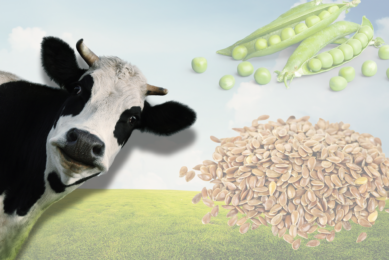Global milk and feed prices rising and more volatile

Milk prices and feed prices are for dairy farmers and their farm profits the most important drivers. Using the standards developed by IFCN to illustrate how these prices have developed globally in the time frame 2006 – 2014 it is possible to illustrate the farm economic implications.
Within the timespan the dataset was acquired dairy farmers had some good times as well as crises. In the last year, from April 2013 until April 2014 most of the indicators on the world market were green and profits were generally good once dairy farmers had these prices. That said, history demonstrates that milk prices and farm profits show a cyclical pattern.
Key findings
The level shift: In the last eight years there was a milk price level shift from ca. US$24 towards a level of over US$40/ 100 kg milk or in US units $17 per CWT. In the same time period an even bigger price shift has happened for feed prices.
Volatility: With the level shift, milk and feed prices have fluctuated +/- 50% around the mean which is creating a substantial risk for dairy farmers – especially those with high yield farming systems. This is illustrated in the margin over compound feed cost which is fluctuating +/- 50% or ca. +/- US$17 per 100 kg milk.
Bad times: In this eight year timespan two major dairy farm crises happened. In 2009 it was mainly driven by the extremely low milk prices where in 2012 it was much more driven by extremely high feed prices.
Good times: High dairy farm margins have been observed in the year 2007 when the first milk price highs were observed. This price peak was driven by substantial shortage of milk worldwide and also by the mindset. No one was prepared for such a situation and there was panic among buyers for enough material for their plants and customers. Similar good times for a longer time period happened in April 2013 to April 2014. We had record milk prices and declining feed prices.
Perspectives: Good times for dairy farming result in a rise in production, producing a lot of extra milk will almost automatically lead to lower milk prices. Right now IFCN expects a cyclical downturn in milk prices and dairy farm economics which then will set the base for the next wave of good times. As a dairy farmer you can find the world milk and feed prices updated monthly on the IFCN website and via this you can be better prepared for the future.
World milk and feed prices 2006 – May 2014
The chart and its indicators used.
The world milk price indicator is based on the weighted average of 3 IFCN world price indicators: skim milk powder & butter (35%); cheese & whey (45%) and whole milk powder (20%). This price can be called world market price of milk in US $ per 100 kg milk. This price has become the key driver for farm gate milk prices for almost all countries in the world.
The IFCN world feed price indicator represents the world market price level for feed. The calculated feed price indicator is based on the price for a diet comprising 70% corn (energy feed) and 30% soybean meal (protein feed). Therefore this price can be used to indicate how compound feed prices have developed.
The milk : feed price ratio indicates how much feed a dairy farmer receiving global milk prices and paying global feed prices can buy, after selling one kg of milk. Margin over compound feed costs: Besides this commonly used ratio IFCN has developed this new farm economic indicator. It assumes an average feed intensity of 300 g compound feed per 1 kg milk. This feed intensity could represent a farm with a milk yield of 8000 kg milk / cow and year using 2.4 t of compound feed per year. The key improvement is that the milk : feed price ratio is weighting milk and feed price changes 1 to 1 where the margin indicator is weighting the feed price based on the kg compound feed fed per kg milk.

What is IFCN
This article follows the approach of the International Farm Comparison Network (IFCN). It is a global network of dairy researchers, from 95 countries and over 100 dairy related companies. (www.ifcndairy.org).
Join 13,000+ subscribers
Subscribe to our newsletter to stay updated about all the need-to-know content in the dairy sector, two times a week.










